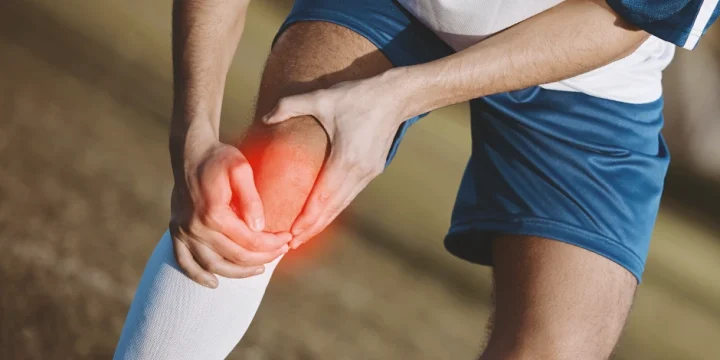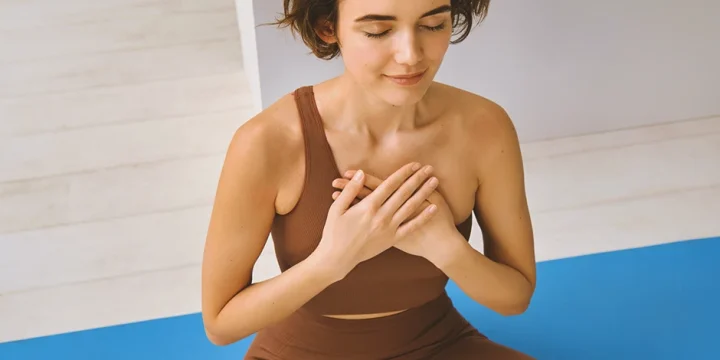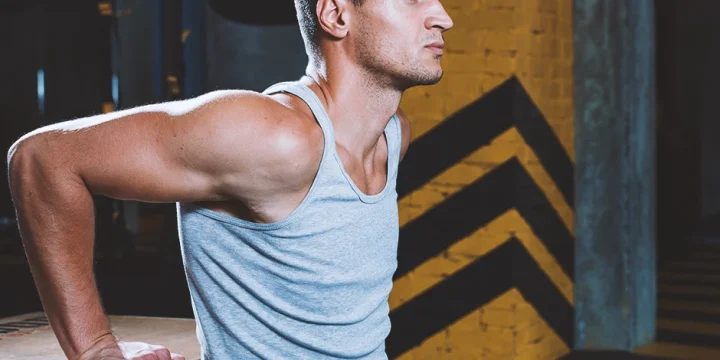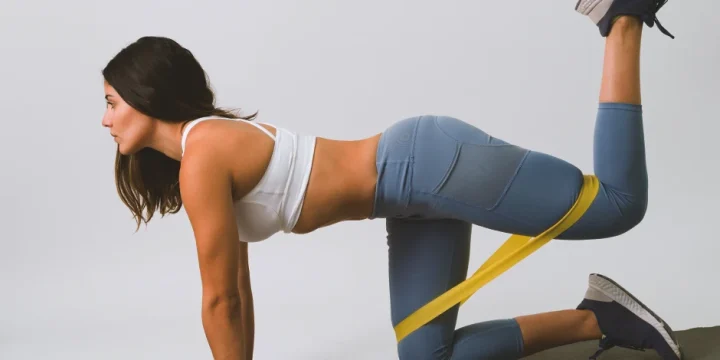Mid-back pain is extremely common with athletes but also with people who spend a lot of their day sitting at a desk with poor posture.
Stretching for such muscle aches can be the easiest way to solve the problem. But if you don’t do the right stretches or get the timing wrong, then you could end up making things worse.
So, I decided to ask my physiotherapist to help me come up with a few stretches that would help people release some of that mid-back tension. Let’s dive in.
Quick Summary
- The four best stretches for middle-back pain are the Bridge Pose, Cat Cow Pose, Thread The Needle, and Seated Twist Stretch.
- Proper technique and timing are crucial for these stretches to be effective in relieving back tension.
- Using a foam roller post-workout can enhance muscle recovery by improving blood flow, as mentioned by Human Kinetics.
- In my opinion, integrating these stretches into a daily routine, especially after periods of prolonged sitting or exercise, can significantly improve back health and flexibility.
What Stretches Are Good For Middle Back Pain?

From my experience, stretches that focus on the spinae erector and lats are good for middle back pain [1].
If you only occasionally do such stretches, then they will probably only temporarily relieve pain.
The idea would be to regularly do them after every upper body workout and sit at a desk for hours.
You could also try to use a foam roller after a workout for a gentle massage and increase blood flow. This could also help with faster muscle recovery times, according to the Human Kinetics [2].
Be mindful of your posture, especially if you spend long hours in front of a computer. Incorporate stretches and movements into your day that counteract the effects of poor posture. Regularly practicing postural correction exercises can significantly reduce the strain on your mid-back, leading to less pain and improved overall back health.
“Back pain, especially short-term pain, is one of the most common medical complaints in the United States. Various lifestyle factors, medical conditions, and injuries can lead to pain in the middle back.”
- Danielle Hildreth, RN, CPT
Best Mid Back Stretches

In my coaching, I've found these stretches, recommended by my physio, to be highly effective for my clients and myself.
While stretching, pay close attention to your breathing. Proper breathing, such as expanding your side rib cage and mid-back with each breath, can significantly enhance the effectiveness of your stretches. Practice deep breathing exercises to improve thoracic mobility, which is crucial for alleviating mid-back tension.
1. Bridge Pose
I recommend the Bridge Pose to my clients for immediate relief, as it's been a game-changer for my own back stiffness.
This is possibly the easiest one you can get started with if your back is very stiff:
- Lay down on a yoga mat with your knees bent and flat on the floor and arms extended outwards.
- Now slowly lift your pelvis up as far as you can and fully arch your back.
- Hold the position for 10 to 15 seconds, and then lower your pelvis down again.
- You can add a slight massage effect with a foam roller or rolled-up towel underneath your shoulder blades.
2. Cat Cow Pose
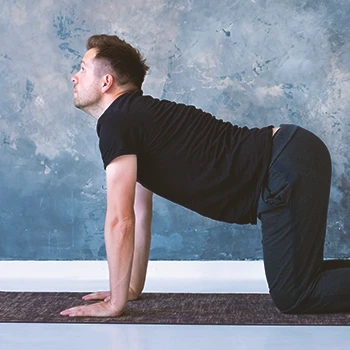
The Cat Cow Pose has been a personal favorite for its gentle yet effective relief from stiffness:
- Get into the starting position on all fours with your knees bent and arms straight.
- Gently lift your head and look up at the ceiling while arching your back as far as possible.
- Hold this position for 10 to 15 seconds, and then go back to a neutral spine.
- Now lower your head down and round out your back to cause a gentle stretching sensation.
3. Thread The Needle
I often use Thread The Needle in my routine for its balance challenge and effective stretch, which I've seen benefits from firsthand.
This is a bit more advanced and will require some balance, as well as right-arm and left-arm coordination:
- Start off on all fours with your hands below your shoulder and knees below your hips.
- Lift your left hand off the ground and feed it behind your right arm and under your right shoulder.
- Twist your upper body and try to reach as far as possible with your left hand.
- Hold this for 10 seconds, and then repeat thread the needle for the other side.
4. Seated Twist Stretch
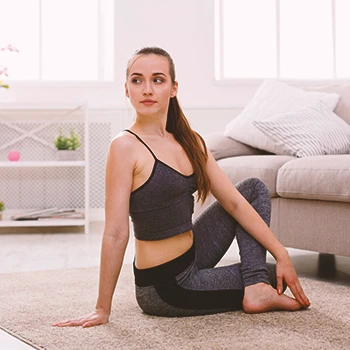
The Seated Twist Stretch has been particularly beneficial for me after long training sessions or desk work.
This is a great option to do if you’re working on a cable machine or have been sitting at a desk for hours:
- Sit at the edge of a chair or bench and gently rest your hands on your knees.
- Slightly lean forward and reach with your left hand behind you and place your right hand on your left knee.
- As your head gently stretches behind you, twist your upper body as far as it feels comfortable.
- You should feel this in your shoulder blades, core abdominal muscles, and even slightly in your chest muscles.
When Should You Do These Stretches?
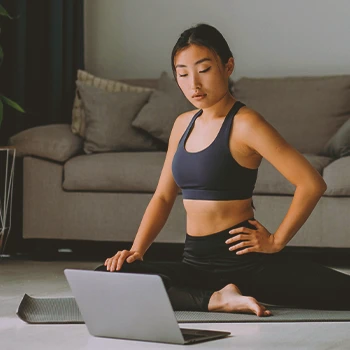
I always advise doing these middle back stretches after a tough weight training session for women or if you’ve been sitting down for hours. They will relieve tension and can even help to avoid neck pain.
For those of you who work at a computer all day, I would suggest setting a reminder for doing the seated twist a couple of times a day as it could significantly help improve your posture, according to the study published in PubMed [3].
But if you have a constant ache, muscle tightness, or nerve pain, then it’s best to first talk to a physio about what stretches are best suited.
Related Articles:
FAQs
What Causes Tight Mid-Back Muscles?
Heavy lifting and sitting with a bad posture are the main causes of tight mid-back muscles. But it’s easy enough to solve the issue by simply doing a few regular back stretches after a workout or day at work.
Should You Stretch With Middle Back Pain?
Yes, you should stretch with middle-back pain as long as it’s not due to nerve or disk damage. For tight muscles, stretching and gentle massaging are the best ways to reduce discomfort.
References:
- https://teachmeanatomy.info/back/muscles/
- https://us.humankinetics.com/blogs/excerpt/the-research-behind-foam-rolling
- https://pubmed.ncbi.nlm.nih.gov/20072041/
About The Author
You May Also Like
